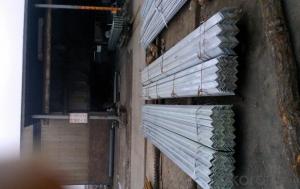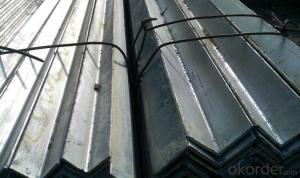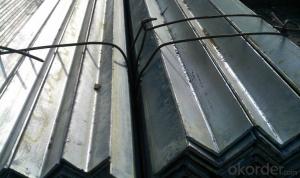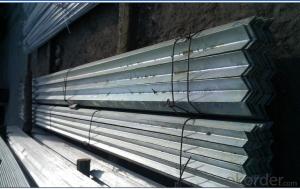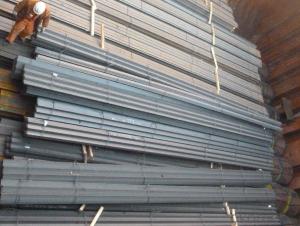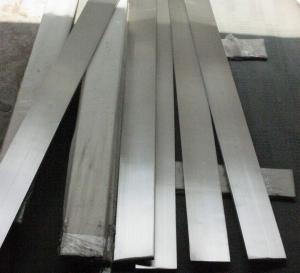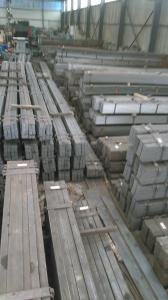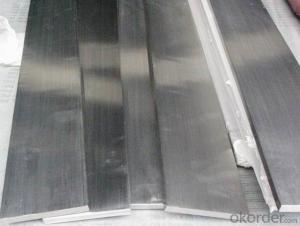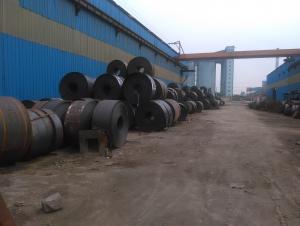high quality hot rolled low carbon steel angle bar
- Loading Port:
- Tianjin
- Payment Terms:
- TT OR LC
- Min Order Qty:
- 5 m.t.
- Supply Capability:
- 2000 m.t./month
OKorder Service Pledge
OKorder Financial Service
You Might Also Like
Product Description:
Specifications of Angle Steel
1. Invoicing on theoretical weight or actual weight as customer request
2. Length: 6m, 9m, 12m as following table
3. Sizes

Sizes: 25mm-250mm | ||
a*t | ||
25*2.5-4.0 | 70*6.0-9.0 | 130*9.0-15 |
30*2.5-6.6 | 75*6.0-9.0 | 140*10-14 |
36*3.0-5.0 | 80*5.0-10 | 150*10-20 |
38*2.3-6.0 | 90*7.0-10 | 160*10-16 |
40*3.0-5.0 | 100*6.0-12 | 175*12-15 |
45*4.0-6.0 | 110*8.0-10 | 180*12-18 |
50*4.0-6.0 | 120*6.0-15 | 200*14-25 |
60*4.0-8.0 | 125*8.0-14 | 250*25 |
5. Payment terms:
1).100% irrevocable L/C at sight.
2).30% T/T prepaid and the balance against the copy of B/L.
3).30% T/T prepaid and the balance against L/C
6.Material details:
Alloy No | Grade | Element (%) | |||||
C | Mn | S | P | Si | |||
|
|
|
|
|
|
| |
Q235 | B | 0.12—0.20 | 0.3—0.7 | ≤0.045 | ≤0.045 | ≤0.3 | |
|
|
|
|
|
|
| |
Alloy No | Grade | Yielding strength point( Mpa) | |||||
Thickness (mm) | |||||||
≤16 | >16--40 | >40--60 | >60--100 | ||||
≥ | |||||||
|
|
|
|
|
| ||
Q235 | B | 235 | 225 | 215 | 205 | ||
Alloy No | Grade | Tensile strength (Mpa) | Elongation after fracture (%) | ||||
Thickness (mm) | |||||||
| ≤16 | >16--40 | >40--60 | >60--100 | |||
≥ | |||||||
|
|
|
|
|
|
| |
Q235 | B | 375--500 | 26 | 25 | 24 | 23 | |
Usage & Applications of Angle Steel
According to the needs of different structures, Angle can compose to different force support component, and also can be the connections between components. It is widely used in various building structures and engineering structures such as roof beams, bridges, transmission towers, hoisting machinery and transport machinery, ships, industrial furnaces, reaction tower, container frame and warehouse etc.
Packaging & Delivery of Angle Steel
1. Packing: it is nude packed in bundles by steel wire rod
2. Bundle weight: not more than 3.5MT for bulk vessel; less than 3 MT for container load
3. Marks:
Color marking: There will be color marking on both end of the bundle for the cargo delivered by bulk vessel. That makes it easily to distinguish at the destination port.
Tag mark: there will be tag mark tied up on the bundles. The information usually including supplier logo and name, product name, made in China, shipping marks and other information request by the customer.
If loading by container the marking is not needed, but we will prepare it as customer request.
Production flow of Angle Steel
Material prepare (billet) —heat up—rough rolling—precision rolling—cooling—packing—storage and transportation
- Q:How are steel flat bars stored or transported?
- Steel flat bars are typically stored and transported in a manner that guarantees their safety and prevents any harm. One popular storage technique involves horizontally stacking the bars on a flat surface, such as a pallet or a rack, allowing for easy access and preventing bending or warping. To provide further protection during storage, the bars are often covered with a protective material like plastic or cardboard to shield them from moisture or dust that could impact their quality. Regarding transportation, steel flat bars are usually loaded onto trucks or shipping containers, where they are securely strapped or banded together to prevent movement or shifting during transit. This ensures the bars remain undamaged and prevents any accidents during transportation. For long-distance transportation, wooden crates or metal frames may be used to offer additional protection. It is important to note that the weight and size of steel flat bars can vary, necessitating the use of appropriate equipment and methods for handling and transportation. Forklifts or cranes are commonly employed to load and unload the bars from trucks or shipping containers. It is crucial to adhere to proper safety procedures and guidelines to avoid any injuries or damage to the bars during these processes. Overall, the storage and transportation of steel flat bars prioritize their safety and maintain their quality. By employing suitable storage methods and proper handling during transportation, the bars can reach their destination without any damage or compromise to their structural integrity.
- Q:How do you protect steel flat bars from chemical corrosion?
- To protect steel flat bars from chemical corrosion, there are several effective methods that can be employed. 1. Coating: Applying a protective coating is one of the most common methods to prevent chemical corrosion. There are various types of coatings available, such as paint, epoxy, enamel, or polyurethane. These coatings act as a barrier between the steel surface and the corrosive chemicals, preventing direct contact and thus reducing the risk of corrosion. It is important to choose a coating that is specifically designed for chemical resistance and to ensure proper application for maximum effectiveness. 2. Galvanization: Galvanizing steel flat bars involves applying a layer of zinc to the surface. This process creates a protective barrier that shields the steel from corrosive substances. Hot-dip galvanizing is a widely used method where the steel is immersed in molten zinc, allowing a thick and durable coating to form. Galvanized steel flat bars are highly resistant to chemical corrosion and can provide long-lasting protection. 3. Stainless steel: Using stainless steel flat bars that contain a high percentage of chromium and nickel can greatly enhance their resistance to chemical corrosion. The addition of these elements forms a passive layer on the surface that acts as a protective barrier against corrosive chemicals. Stainless steel is particularly suitable for applications where exposure to aggressive chemicals is expected. 4. Proper storage and handling: Ensuring proper storage and handling practices is essential in protecting steel flat bars from chemical corrosion. Storing them in a dry and well-ventilated area, away from corrosive substances, can help prevent direct exposure. Additionally, using protective covers or wrapping the bars in moisture-resistant materials can provide an extra layer of defense. Regular inspection and maintenance are also important to detect any signs of corrosion early. If any damage or deterioration is identified, prompt repairs or replacements should be carried out to maintain the integrity and longevity of the steel flat bars.
- Q:Are steel flat bars suitable for welding projects?
- Yes, steel flat bars are suitable for welding projects. Steel flat bars are commonly used in welding projects due to their versatility and strength. They have a flat surface which makes them easy to work with and weld, allowing for precise and strong connections. Steel flat bars are available in various sizes and thicknesses, making them suitable for different types of welding projects. Additionally, steel is known for its durability and resistance to heat, which are important factors in welding. Overall, steel flat bars are a reliable and commonly used material for welding projects.
- Q:How do steel flat bars contribute to the overall safety of public structures?
- Steel flat bars contribute to the overall safety of public structures in several ways. Firstly, they provide structural support and reinforcement, enhancing the strength and stability of the structure. This helps to prevent collapse or structural failure, ensuring the safety of people who occupy or pass by the building. Additionally, steel flat bars are resistant to fire, corrosion, and extreme weather conditions, making them a durable and reliable choice for public structures. Their high tensile strength also allows them to withstand heavy loads and impacts, reducing the risk of accidents or damage. Overall, steel flat bars play a crucial role in enhancing the safety and longevity of public structures.
- Q:What are the weight calculations for steel flat bars?
- The weight of steel flat bars depends on the dimensions and density of the steel used. To calculate the weight of a steel flat bar, one typically multiplies the bar's cross-sectional area by its length and density. The cross-sectional area of a flat bar can be found by multiplying its width by its thickness. For instance, if a flat bar measures 2 inches in width and 0.25 inches in thickness, the cross-sectional area would be 0.5 square inches. To determine the weight, one would then multiply the cross-sectional area by the length of the bar and the density of the steel. Steel density can vary depending on the alloy, but a common value is approximately 7.85 grams per cubic centimeter (or 7850 kilograms per cubic meter). Taking the previous example and assuming a length of 10 feet (or 120 inches), the weight of the steel flat bar can be calculated as follows: Weight = Cross-sectional area x Length x Density Weight = 0.5 square inches x 120 inches x 7850 kilograms per cubic meter It is important to ensure that the units are consistent. If inches are used for the dimensions, the density may need to be converted to pounds per cubic inch or ounces per cubic inch. Keep in mind that these weight calculations are based on the assumption that the steel flat bar is solid. If the bar has any hollow or cut-out sections, the weight calculation would need to be adjusted accordingly. Moreover, different steel alloys may have different densities, so it is always advisable to consult the specific density for the type of steel being used.
- Q:What is the difference between carbon steel and tool steel flat bars?
- Carbon steel and tool steel flat bars are commonly utilized in a range of industries but have distinct differences. The composition and intended use are the primary factors setting carbon steel apart from tool steel. Carbon steel consists mainly of iron and carbon with small amounts of other elements. It is a versatile and cost-effective material suitable for construction, automotive, and general fabrication purposes. Carbon steel flat bars are known for their durability and strength, making them ideal for structural applications. Conversely, tool steel is a specialized steel type specifically created for crafting tools and dies. It contains additional alloying elements like chromium, vanadium, tungsten, or molybdenum, which enhance hardness, wear resistance, and toughness. Tool steel flat bars maintain their shape and cutting edge even under high temperatures and intensive use. They are commonly employed in the manufacturing of precision components, tools, dies, and molds. Another contrast between carbon steel and tool steel flat bars lies in their hardness. Tool steel flat bars are generally much harder than carbon steel flat bars due to their higher alloy content. This increased hardness enables tool steel to endure the repetitive stress and impact often encountered during tooling operations. In terms of cost, carbon steel flat bars are generally more affordable than tool steel flat bars. This is because tool steel necessitates additional alloying elements to attain the desired properties, which raises production costs. In conclusion, although carbon steel and tool steel flat bars share the commonality of being types of steel, they serve different purposes. Carbon steel is a versatile and economical material used in various applications, while tool steel is a specialized steel designed for tool and die production. Tool steel flat bars are harder and more expensive due to their alloy content, while carbon steel flat bars are renowned for their strength and affordability.
- Q:Can steel flat bars be used in the marine industry?
- Yes, steel flat bars can be used in the marine industry. Steel is a commonly used material in maritime applications due to its high strength, durability, and resistance to corrosion. Steel flat bars can be utilized for various purposes such as structural frameworks, support beams, and reinforcement in marine vessels, offshore platforms, and other marine structures. Additionally, steel can be coated or treated to further enhance its resistance to saltwater corrosion, making it suitable for marine environments.
- Q:Can steel flat bars be used for construction projects?
- Yes, steel flat bars can be used for construction projects. Steel flat bars are versatile and widely used in the construction industry due to their strength and durability. They are commonly used for various applications such as supports, braces, frames, and structural components in buildings, bridges, and infrastructure projects. Steel flat bars provide reliable structural support and are known for their high load-bearing capacity, making them ideal for construction purposes. Additionally, their uniform shape and size make them easy to work with, allowing for efficient installation and fabrication. Overall, steel flat bars are a popular choice in construction due to their strength, durability, and versatility.
- Q:What are the different machinability ratings for steel flat bars?
- The machinability ratings for steel flat bars can vary depending on the specific grade and composition of the steel. However, some commonly used machinability ratings for steel flat bars include AISI 1212 (100% rating), AISI 1112 (125% rating), and AISI 1045 (50% rating).
- Q:What are the different methods of surface protection for steel flat bars?
- There are several methods of surface protection for steel flat bars to prevent corrosion and damage. Some of the most common methods include: 1. Galvanization: This process involves coating the steel flat bars with a layer of zinc, either by hot-dip galvanizing or electroplating. The zinc acts as a sacrificial layer, protecting the steel from rust and corrosion. 2. Powder coating: Powder coating is a dry finishing process where a powdered paint is electrostatically applied to the steel flat bars. The bars are then heated, causing the powder to melt and form a durable, protective coating. Powder coating provides excellent resistance to scratches, chipping, and fading. 3. Painting: Painting the steel flat bars with a suitable primer and topcoat is another effective method of surface protection. The primer helps to adhere the paint to the steel, while the topcoat provides a protective layer against corrosion, UV radiation, and other environmental factors. 4. Varnishing: Varnishing involves applying a clear coating to the surface of the steel flat bars. This coating forms a protective film that prevents moisture and air from reaching the steel, thereby reducing the risk of corrosion. 5. Epoxy coating: Epoxy coatings are often used in industrial and marine applications for their excellent resistance to chemicals, moisture, and abrasion. These coatings can be applied as a single or multiple layer system, providing a long-lasting and durable protection for steel flat bars. 6. Metal plating: Metal plating, such as chrome plating or nickel plating, can be used to protect steel flat bars from corrosion. The plating process involves depositing a layer of metal onto the surface of the bars, creating a barrier against moisture and oxidation. 7. Anodizing: Anodizing is commonly used for aluminum, but it can also be applied to steel flat bars. This process involves creating a controlled oxide layer on the surface of the steel through electrolysis. The resulting layer provides enhanced corrosion resistance and can be further sealed with a protective coating. It is important to select the most appropriate surface protection method based on the specific application, environment, and desired durability of the steel flat bars. Regular maintenance and inspection are also crucial to ensure the continued effectiveness of the chosen protection method.
1. Manufacturer Overview |
|
|---|---|
| Location | |
| Year Established | |
| Annual Output Value | |
| Main Markets | |
| Company Certifications | |
2. Manufacturer Certificates |
|
|---|---|
| a) Certification Name | |
| Range | |
| Reference | |
| Validity Period | |
3. Manufacturer Capability |
|
|---|---|
| a)Trade Capacity | |
| Nearest Port | |
| Export Percentage | |
| No.of Employees in Trade Department | |
| Language Spoken: | |
| b)Factory Information | |
| Factory Size: | |
| No. of Production Lines | |
| Contract Manufacturing | |
| Product Price Range | |
Send your message to us
high quality hot rolled low carbon steel angle bar
- Loading Port:
- Tianjin
- Payment Terms:
- TT OR LC
- Min Order Qty:
- 5 m.t.
- Supply Capability:
- 2000 m.t./month
OKorder Service Pledge
OKorder Financial Service
Similar products
New products
Hot products
Related keywords
